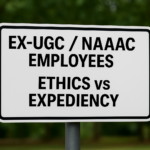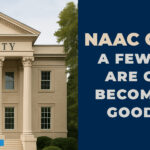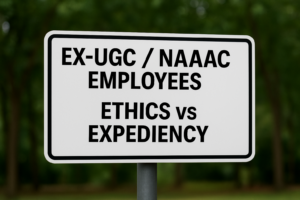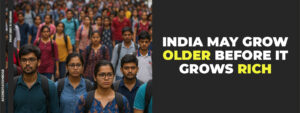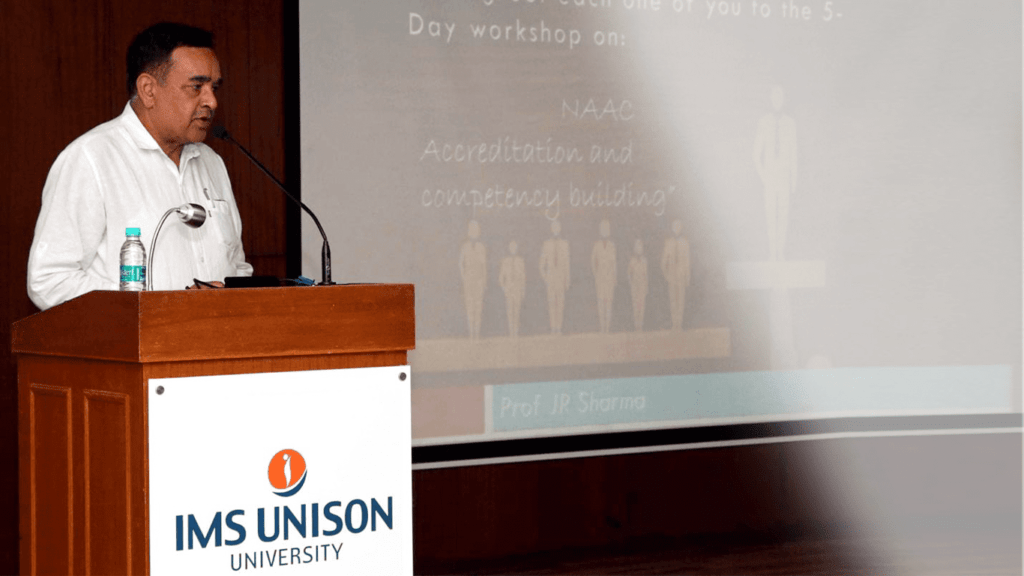For years, AICTE was clearly out of tune with the institutes, expecting a minimum Faculty to Students ratio (FSR) of UG engineering and MBA/PGDM as 1:15, and cadre ratio of 1:2:6. This had compelled most affiliated institutes to misrepresent and sign false affidavits to keep the colleges running. Thanks to late stage wisdom that the FSR was lowered to 1:20. Is this too little, too late?
The flip side is that if benchmarks are not in sync with the global best practices, the loss of traction would put institutes in ‘Chalta hai’ mode and that would be even more damaging. So, what is the answer?
One answer was recently provided by the UGC itself. It allowed Institutes of Eminence to hire faculty, rich with advanced skills, expertise and experience in the domain field with no PhD tag attached It sounds good.
Now, take a look at 1:20 FSR. It is a stark fact that nearly 80% of private institutes in the country are not majorly into research. 1:20 ratio is fine when at least 10% of all faculty is into serious research endeavors. The truth is astoundingly, different. It is therefore extremely difficult to maintain even this ratio, particularly when States are hell went upon capping the admission fee. So, where do the institutes go?
The flip-flop by the AICTE on whether to count Adjunct faculty into the said ratio or not, is very much unfortunate. Adjunct faculty gives a breather to the institutes on maintaining the given ratio. It also provides institute an advantage to take on-board, highly competent retired academicians and researchers to mentor faculty and students and be teachers of a subject, as well. It would be fair to the private institutes to have them at least, 20% of Adjunct faculty to be counted (based on fractional load) towards maintaining an overall ratio of 1:20. I will go to the extent that if Adjunct faculty had retired as professors or associate professors, they should also be counted towards the cadre ratio, at least for the purpose of accreditation and approvals.
It is indeed unfortunate to observe that Accrediting bodies, Councils and, Commission’s guidelines, policies and processes handed down to the institutes have not been quite inspiring. For example, the NAAC SSR issued in July 2017, hopefully after immense deliberations, is strikingly short on adequacy. When numerous deficiencies in SSR were brought to the notice of the NAAC, it allowed institutes to opt out from a few specific criteria, equal to 5% of total marks. It is not a sufficient correction. The SSR must go for an urgent revision. There are not enough checks to verify and validate the actual data of the institutes.
There are whole lot of discrepancies in the way NAAC process and criteria are formed. A few criteria are vague and lend to cent percent marks even by very ordinary institute. For example 99% institutes will score 100% marks in criteria such as (a) percentage of programs where syllabus revision was done during the last five years (b) average percentage of courses having focus on employability/entrepreneurship/skill development (c) percentage of programs with CBCS or electives courses (d) faculty using ICT tools for teaching etc. On the other hand, there are criteria which lend nearly 90% institutes to score merely 1% and below. For example (a) Students from differently-abled category, out of the total number of students who sought admissions (b) faculty from other States (c) national/international sports awards (d) Patents filed.
If the regulatory bodies have to succeed in winning the confidence of the institutes, they shall have to do more in providing sound education system, policies and guidelines.
Prof J R Sharma is an expert in the field of global best practices in engineering and management. The views expressed are personal.

